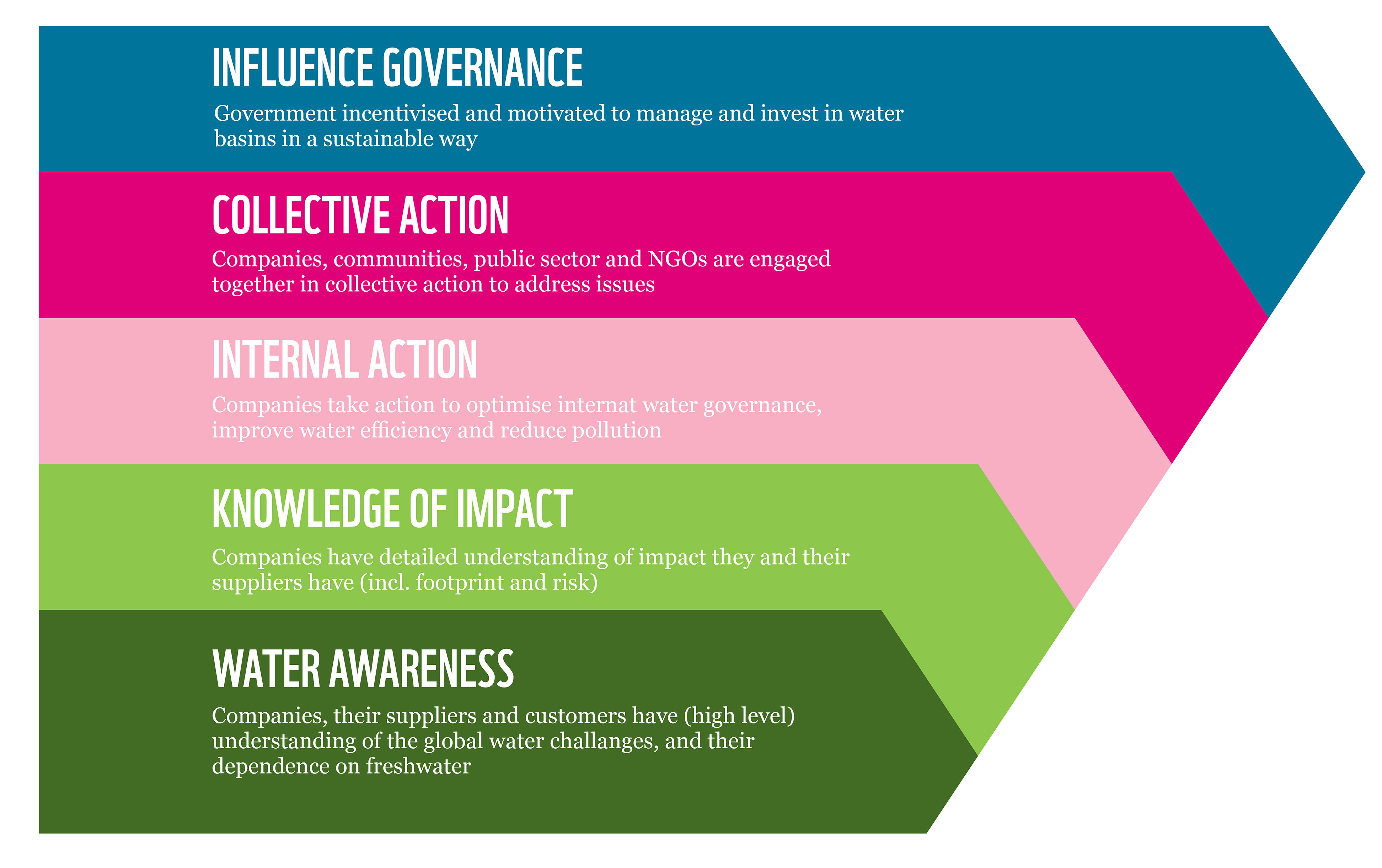The WWF is run at a local level by the following offices...
- WWF Global
- Adria
- Argentina
- Armenia
- AsiaPacific
- Australia
- Austria
- Azerbaijan
- Belgium
- Bhutan
- Bolivia
- Borneo
- Brazil
- Bulgaria
- Cambodia
- Cameroon
- Canada
- Caucasus
- Central African Republic
- Central America
- Chile
- China
- Colombia
- Croatia
- Democratic Republic of the Congo
- Denmark
- Ecuador
- European Policy Office
- Finland
The textile sector is one of the key drivers of Viet Nam’s economy. As a top exporter, the sector accounts for 15% of the country’s total exports and is valued at $39 billion USD as of 2019. It is also a heavy energy user and abstractor and polluter of water, as sections of its supply chain Viet Nam require significant water for wet processing. This in turn generates highly polluted wastewater from chemical dying, and consume large amounts of energy to boil water and to run machinery. This sector aims to transform its current reputation from being “low cost and environmentally harmful Viet Nam” to being “sustainably ‘Made in Viet Nam,’” in order to attract further foreign investment and gain a competitive business edge in the global market.
WWF inspires companies who are both impacted by and are dependent upon freshwater to step up. By taking the water stewardship journey, they can help solve the challenges facing both people and the planet. See more at WWF International Water Stewardship

Figure 1: The WWF Water Stewardship Ladder (2013)

Sponsored by SDC, HSBC, and Tommy Hilfiger, WWF is working with the national partners, including Ministry of Industry and Trade (MOIT), Viet Nam Textile and Apparel Association (VITAS), Vietnam Chamber of Commerce and Industry (VCCI), along with other sectoral and international partners, to transform the textile sector in Viet Nam. By engaging textile and garment producers on sectoral and environmental governances, WWF hopes to bring social, economic, and conservation benefits to the country and the entire Mekong region. This 4-year project, launched in September 2018, is supported by the goals of improving water and energy performance while reducing their impacts; this both improves Mekong River governance and helps to lower greenhouse gas emissions driving dangerous climate change. By making textile businesses more active participants in the governance of the Mekong River and sustainable energy planning, we are creating opportunities for these businesses to discuss collective action to achieve sustainable investment and development in the textile sector.
We are driving activity around a four-pillar approach that targets multiple stakeholders around river management, good water-energy business practices, improving regulatory policies, and strengthening the financial case for mobilizing capital resources in the sector (Figure 2).

Figure 2: Adopted 4 pillar approach
- At the Mekong river region, we invited VITAS and Vietnamese textile companies to participate in annual inter-regional sectoral events in 2018 and 2019.
- At the wet processing site level, sector mapping exercises and factory audits were conducted in May to November 2019 to identify baseline water and energy efficiency. Solutions for a number of garment factories were then recommended.
- To promote green finance for textile bankable solutions, in 2019, we provided training to three big banks (BIDV, VCB, Vietinbank) on mainstreaming the Environmental/Social/Governance (ESG) framework to the credit rating system. A workshop on green finance for the textile sector was held in July 2019, with participants from banks, garment companies, and associations alike.
- Under the policy advocacy and collective action umbrella, we are compiling an action plan and guidelines on our green textile vision. We also support and provide input on the development of the national sector strategy for 2020-2030, led by the Viet Nam Industry Agency of MOIT.
- By 2021, we will collaborate with the Lancang-Mekong Cooperation mechanism and the Chinese National Textile and Apparel Council (CNTAC) to promote sustainable Chinese overseas investment in industrial parks and the textile sector in Viet Nam.
- Raise water risk awareness and provide technical training towards water- and energy-efficient solutions for textile and garment enterprises.
- Partner with VITAS and VCCI to extensively communicate sustainability transformations amongst sector platforms.
- By 2022, we will support studying the feasibility of bankable projects for textile SMEs. Scale up green investments in the textile industry by working with the bank sector to set up dedicated credit lines for green transformation.
- Engage local CSOs, SMEs, and the public sector in pursuing collective action towards preserving the availability and quality of water resources in Mekong and Dong Nai river basins.
- Further mapping brand suppliers in Viet Nam and throughout the Mekong using Open Apparel Registry (OAR) data.
- Working with ZDHC (the Zero Discharge of Hazardous Chemicals program) to further drive understanding and uptake of the ZDHC program globally, including in Viet Nam.
- Exploring the development of a wet processing app to further support the dissemination of best available technologies and scale up improved water-energy solutions.